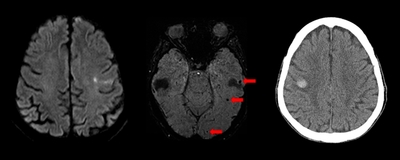Best, JG;
Bell, R;
Haque, M;
Chandratheva, A;
Werring, DJ;
(2019)
Atrial fibrillation and stroke: a practical guide.
Practical Neurology
, 19
(3)
pp. 208-224.
10.1136/practneurol-2018-002089.

Preview |
Text
Bell Atrial Fibrillation and Stroke - A Practical Guide - Revision.pdf - Accepted Version Download (1MB) | Preview |
![[thumbnail of Figure1_new.jpg]](https://discovery.ucl.ac.uk/10070322/3.hassmallThumbnailVersion/Figure1_new.jpg)  Preview |
Image
Figure1_new.jpg - Accepted Version Download (654kB) | Preview |
![[thumbnail of Figure 2.jpg]](https://discovery.ucl.ac.uk/10070322/8.hassmallThumbnailVersion/Figure%202.jpg)  Preview |
Image
Figure 2.jpg - Accepted Version Download (512kB) | Preview |
![[thumbnail of Figure 3.jpg]](https://discovery.ucl.ac.uk/10070322/13.hassmallThumbnailVersion/Figure%203.jpg)  Preview |
Image
Figure 3.jpg - Accepted Version Download (756kB) | Preview |
![[thumbnail of Figure 4_new.jpg]](https://discovery.ucl.ac.uk/10070322/18.hassmallThumbnailVersion/Figure%204_new.jpg)  Preview |
Image
Figure 4_new.jpg - Accepted Version Download (103kB) | Preview |
Abstract
Neurologists and stroke physicians will be familiar with atrial fibrillation as a major cause of ischaemic stroke, and the role of anticoagulation in preventing cardioembolic stroke. However, making decisions about anticoagulation for individual patients remains a difficult area of clinical practice, balancing the serious risk of ischaemic stroke against that of major bleeding, particularly intracranial haemorrhage. Atrial fibrillation management requires interdisciplinary collaboration with colleagues in cardiology and haematology. Recent advances, especially the now-widespread availability of direct oral anticoagulants, have brought opportunities to improve stroke care while posing new challenges. This article gives an overview of the contemporary diagnosis and management of atrial fibrillation, and the associated evidence base. Where there is uncertainty, we describe our own approach to these areas, while highlighting ongoing research that will likely guide future practice.
Archive Staff Only
 |
View Item |


